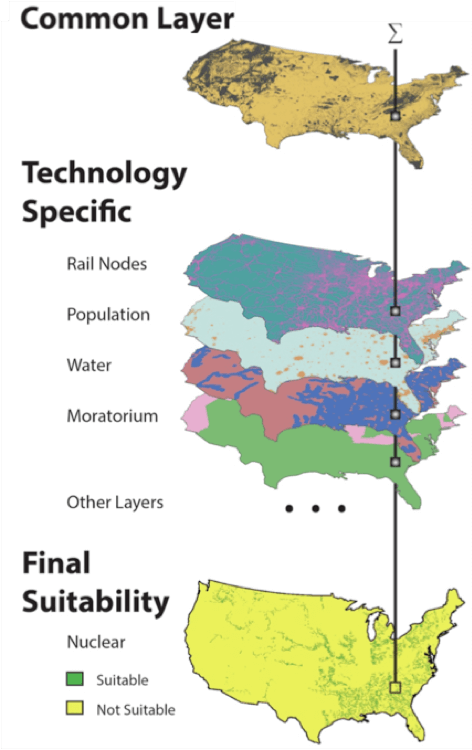Quoted from: https://im3.pnnl.gov/model?model=CERF
The Capacity Expansion Regional Feasibility (CERF) model was developed to constrain generation capacity expansion in electric power systems (Vernon et al. 2018). CERF evaluates the "on-the-ground" feasibility of generation expansion plans produced by human-Earth systems models for the United States by addressing the locational impacts of water availability, land use constraints, population dynamics, environmental regulations, and locational economic considerations (e.g., energy value and interconnection costs). CERF currently hosts a suite of exclusion layers that address land-use restrictions, sensitive species, terrain, and many other potential siting constraints that must be considered in the United States. After exclusion areas have been determined, CERF uses its economic algorithm to determine the net locational cost, which is the difference between a technology's interconnection cost and its annualized net operating value in each suitable grid cell. The major outputs of CERF include siting feasibility and corresponding generation capacity as well as interconnection costs. CERF is currently being used to analyze how siting analysis can help constrain technology-specific energy supply projections from coarser models.

Figure: Exclusion layers for technology-specific suitability analysis
CERF allows us to understand the on-the-ground constraints that could limit the ability to site new generators.
Credit: Vernon et al. 2018








